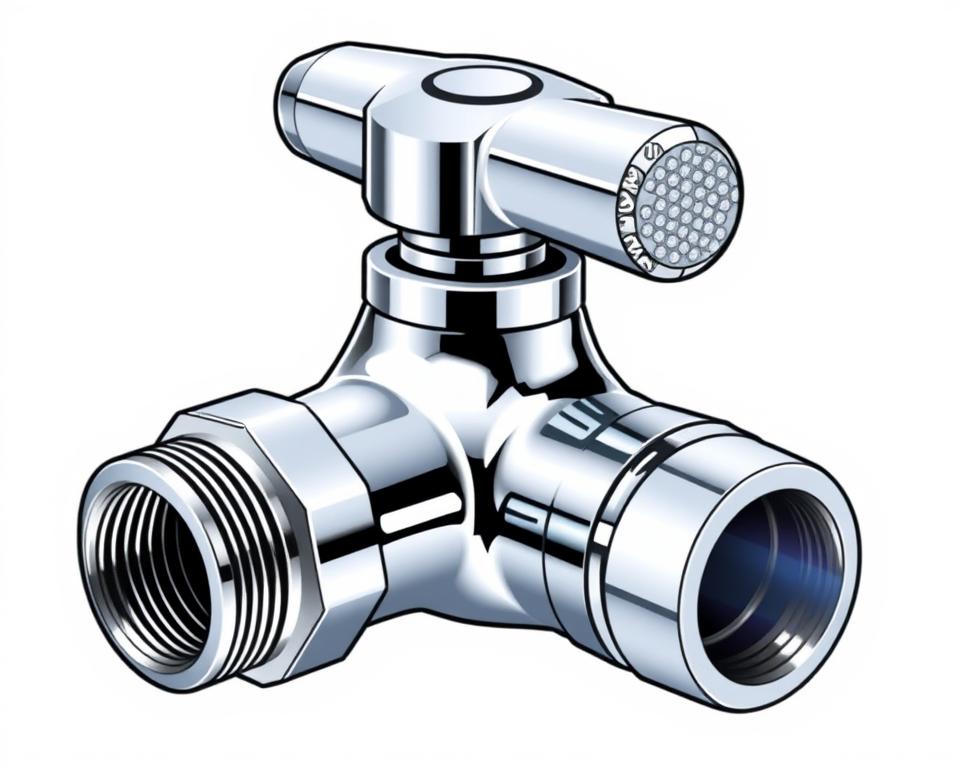Premier Cleaning Service Las Vegas – Request a Quote
It’s surprising that the typical U.S. household accumulates about nearly 40 lbs of dust each year? If you’re in Las Vegas and want a pristine home, Kokoro Cleaning service emerges as the number-one service. They are the leading option for housekeeping Vegas.
Kokoro Cleaning delivers top-notch cleaning services upon which Las Vegas households and firms trust. We specializes in transforming all kinds of areas with unrivaled precision and professionalism. We focus on professional house cleaning Las Vegas residents need.
Being a premier cleaning company in Las Vegas, we know each space is different. We provide bespoke cleaning solutions to suit your precise needs. This guarantees your home or business remains immaculate.
Main Points
- Tailored professional cleaning to Las Vegas homes and businesses
- Wide-ranging residential and commercial cleaning services
- Skilled team with remarkable attention to detail
- Customized cleaning solutions for all space
- Commitment to client happiness and excellence

Say Hello to Kokoro Cleaning: Las Vegas’ Leading Cleaning Service
Right in Las Vegas, Kokoro Cleaning shines. Our approach transcends traditional home cleaning services. The name Kokoro, meaning the balance of mind and heart in Japanese, mirrors our philosophy. We apply this principle to every cleaning service in NV’s Las Vegas.
Our dedication to excellence makes us different. We re-energize environments with meticulous care and true enthusiasm. A clean home is not only neat surfaces; it’s a space that promotes well-being and calm.
- Customized cleaning solutions for every home
- Professionally skilled cleaning experts
- Commitment to superior customer satisfaction
- Cutting-edge cleaning methods
Our team of passionate professionals brings expertise and friendliness to every project. We refresh spaces, ensuring each corner demonstrates our standard of quality in home cleaning services las vegas.
| Service Aspect | Kokoro Cleaning Approach |
|---|---|
| Attention to Detail | Minute-level precision |
| Customer Care | Friendly and tailored support |
| Technical Expertise | State-of-the-art tools |
Select Kokoro Cleaning for a transformative cleaning experience. Let us breathe new life into your home.
Comprehensive Cleaning Service Las Vegas Options
Kokoro Cleaning is a leading provider of house cleaning in Las Vegas. We provide a broad spectrum of professional cleaning services for both residential and commercial spaces. Our services ensure every area gets the attention it deserves.
Our services in Las Vegas span various specialized cleaning areas:
- Residential Cleaning: Personalized for homes of every scale
- Commercial Cleaning: Professional environments sparkle with our expertise
- Specialized Services: Short-term rental cleaning experts
- Precision Window Cleaning: Guaranteed streak-free results
Each service is crafted with accuracy and commitment. We acknowledge that every space has distinct needs. That’s why our team designs personalized cleaning plans that fulfill specific client requirements.
“A tidy home transform living experiences” – Kokoro Cleaning Team
Our team employs state-of-the-art equipment and environmentally safe solutions. This guarantees your space gets the best treatment while being planet-friendly.
Whether it’s routine maintenance or deep cleaning, Kokoro Cleaning delivers remarkable results. We endeavor to exceed your expectations.
Discover Our Professional Cleaning Services Catalog
Kokoro Cleaning is a go-to choice for Las Vegas residents seeking dependable cleaning solutions. Our services are crafted to meet the varied needs of both homes and businesses. We ensure every space receives due care.
We offer specialized cleaning packages for Las Vegas homes and businesses:
- Standard Cleaning: Periodic care for always tidy spaces
- Deep Cleaning: Comprehensive sanitization for a total renewal
- Move-In/Move-Out Cleaning: Complete preparation for relocations
- Custom Cleaning Packages: Personalized plans for unique requirements
Our Vegas cleaning services focus on providing outstanding results. Each cleaning method is meticulously designed to match different environments and client preferences.
| Service Type | Key Features | Duration |
|---|---|---|
| Standard Cleaning | General surface cleaning, dusting, vacuuming | 2-3 hours |
| Deep Cleaning | Detailed sanitization, hard-to-reach areas, thorough care | about 4 to 5 hours |
| Move Cleaning | Full move-prep, detailed cleaning | around 3 to 4 hours |
“Clean spaces transform living experiences” – Kokoro Cleaning Team
As a premier home cleaning Las Vegas provider, we believe that every space has its own character. Our professional team makes sure that story remains immaculate.
Expert Deep Cleaning for Las Vegas Homes
Kokoro Cleaning offers premium deep cleaning services Las Vegas locals rely on to refresh their homes. Our approach to residential cleaning Las Vegas penetrates deeper. We eliminate hidden dirt and grime in hard-to-reach spots.
Deep cleaning calls for a comprehensive plan, setting us apart from regular maintenance. Our apartment cleaning services Las Vegas prioritize complete home sanitization. We guarantee every nook receives the attention it deserves.
- Detailed kitchen deep cleaning, including internal appliances
- Comprehensive bathroom deep cleanse
- Thorough living area dust-allergen elimination
- Hard-to-reach area cleaning
Our expert cleaning technicians use advanced eco-friendly techniques to remove bacteria, dust, and allergens. We recognize Las Vegas homes face distinct cleaning hurdles due to desert dust and frequently used areas.
A truly clean home is not merely surface-level appearance—it’s about creating a healthy living environment.
For those in need of a deep cleaning makeover, our systematic process is your go-to. We meticulously tackle overlooked areas, making your home feel renewed, sanitized, and re-energized.
The Kokoro Cleaning Promise of Quality
At Kokoro Cleaning, our maid service in Las Vegas is peerless in quality. We know that housekeeping in Las Vegas is not simply a surface-level task. It demands a deep, thorough approach that secures customer satisfaction at its highest level.
Our quality promise is rooted in stringent cleaning protocols and a focus on every detail. We work to deliver a cleaning experience that surpasses what you expect:
- 100% satisfaction guarantee for every cleaning service
- No payment required until the job is done right
- Detailed cleaning checklists for reliable quality
- Professionally qualified cleaning specialists
We take pride in our commitment to excellence. Our maid cleaning service in Las Vegas goes beyond the usual housekeeping. We apply a detailed quality control process. Each cleaning session is carefully supervised to ensure your space achieves our stringent benchmarks.
“Our goal is not just to clean, but to enhance your space into a pristine environment you’ll love coming home to.”
Choosing Kokoro Cleaning means choosing a housekeeping service that values your satisfaction. We’re so confident in our work that we don’t charge until you’re entirely satisfied with the results.
Residential Cleaning Services Personalized to Your Needs
Kokoro Cleaning understands that every home in Las Vegas is distinct. Our same-day cleaning service Las Vegas offers personalized solutions right at your door. We realize that each household has its own cleaning needs, demanding a customized approach.
Our Vegas cleaners are skilled in adapting to various home layouts and client preferences. We provide detailed cleaning packages to fulfill your specific requirements:
- Regular weekly maintenance
- In-depth clean for full home renewal
- Comprehensive relocation cleaning
- After-build cleaning
- Special event preparation cleaning
Flexibility is our promise. Las Vegas maid services from Kokoro Cleaning offer scheduling that matches your lifestyle. Whether you need a quick clean or a full home makeover, our team is eager to deliver outstanding results.
“Your home deserves personalized attention – and that’s exactly what we provide.” – Kokoro Cleaning Team
Our professional cleaners offer expertise, precision, and care to every residential cleaning project. We use advanced cleaning methods and eco-friendly products. This ensures your living space remains sparkling and safe.
Our Sustainable Cleaning Approach
Kokoro Cleaning leads in sustainable Las Vegas housekeeping services, dedicated to safeguarding your home and the environment. Our eco-friendly cleaning service Vegas approach ensures every surface sparkles while reducing ecological harm.
We know that effective cleaning doesn’t need harsh chemicals. Our cleaning services Vegas use cutting-edge green technologies and plant-based products. These deliver superb results without harming your health or the planet’s well-being.
- Biodegradable cleaning solutions
- Non-toxic, allergen-free products
- Reduced plastic waste practices
- Energy-efficient cleaning equipment
Green cleaning isn’t just a trend—it’s our promise to you and the environment. Our chosen products are potent enough to banish dirt and grime, yet safe on surfaces and harmless for families, pets, and sensitive individuals.
By opting for Kokoro Cleaning, you’re not only getting a spotless living space. You’re also supporting a sustainable approach to professional cleaning. This approach respects both your home and our shared ecosystem.
Professional Cleaning for Businesses for Las Vegas Companies
Kokoro Cleaning is a leading choice for house cleaning services in Vegas, serving diverse industries. We convert workspaces into clean, professional areas that wow clients and enhance employee productivity.
Our specialized cleaning company in Vegas looks after different sectors, providing tailored cleaning solutions for each space:
- Office complexes
- Retail establishments
- Medical facilities
- Educational institutions
- Industrial warehouses
We recognize that every business has unique cleaning needs. Our house cleaning Vegas team uses modern equipment and eco-friendly methods for outstanding results.
“A clean workspace is the foundation of professional success.” – Kokoro Cleaning Team
We provide flexible scheduling to minimize disruption to your operations. Our cleaning packages are customizable, from daily upkeep to deep cleans.
Choosing Kokoro Cleaning means more than just a cleaning service. It’s an investment in a professional partner devoted to your business’s image and a safer work environment.
Special Cleaning Packages and Custom Services
Kokoro Cleaning acknowledges that every home and business in Las Vegas has individual cleaning needs. Our home cleaning services in Vegas deliver flexible, personalized solutions customized to your specific requirements.
We focus on creating custom cleaning packages that go beyond standard services in Vegas, NV. Our approach ensures each client receives precisely the cleaning support they need.
- Move-In/Move-Out Cleaning: Thorough deep cleaning to prepare properties for new tenants
- Post-Construction Cleanup: Detailed removal of construction debris and dust from newly renovated spaces
- Event Cleanup Services: Efficient and speedy cleaning after parties, corporate gatherings, and special events
As a leading cleaning companies in Vegas, we pride ourselves on our flexibility. Whether you need a single intensive clean or regular maintenance, our team crafts solutions tailored to your exact specifications.
“Your space, your rules – we clean according to your unique requirements”
Our custom packages include comprehensive assessments, specialized equipment, and professional techniques to tackle your specific cleaning challenges. We improve spaces with precision and care.
How Kokoro Cleaning Above in Las Vegas
Kokoro Cleaning is a leading pick for house cleaning in Vegas, thanks to our dedication to excellence and professionalism. Our approach to home cleaning in Vegas surpasses the usual. We provide service that truly sets us apart from others.
What makes our house cleaning services in Vegas unique? We pride ourselves on:
- Rigorous Staff Selection: Every team member undergoes comprehensive background checks and receives thorough training supervised by our owner
- Cutting-edge cleaning equipment for outstanding results
- Personalized cleaning strategies tailored to each home’s unique needs
- Commitment to eco-friendly cleaning solutions
Our professional cleaning team receives specialized training that defines best practice in Las Vegas. We invest considerable resources in developing our staff’s skills. This makes sure they understand the nuanced requirements of different home environments.
Kokoro Cleaning doesn’t just clean spaces—we re-imagine them. Our meticulous attention to detail and customer-first approach have earned us a reputation as the most trusted cleaning service in the Las Vegas area.
“Quality is never an accident; it is always the result of high intention and sincere effort.” – Our Cleaning Philosophy
Selecting Kokoro Cleaning means selecting a house cleaning service that genuinely cares about your home’s cleanliness and your complete satisfaction.
Scheduling Your Professional Cleaning Service
Booking a house cleaning service in Vegas is now a piece of cake with Kokoro Cleaning’s streamlined scheduling process. Our online platform is designed to make arranging your home cleaning in Vegas hassle-free.
Our team of deep cleaning services in Vegas features flexible scheduling to suit your lifestyle. You can choose from various booking methods:
- Online booking through our website
- Direct phone scheduling
- Mobile app reservation system
- Email booking option
Real-time availability lets you pick specific dates and times that fit your schedule. We accommodate different needs, providing:
- Same-day service availability
- Weekend and evening appointments
- Customizable cleaning packages
- No-obligation free estimates
Our pricing is transparent, so you know what to expect. We only charge after ensuring your complete satisfaction, providing peace of mind with every booking.
Your clean home is just a few clicks away!
Want to spruce up your living space? Book your professional cleaning service today and discover the Kokoro Cleaning difference.
Wrapping It Up
Kokoro Cleaning is the number-one choice for apartment cleaning services in Vegas, offering superb residential cleaning services. We transform living spaces, going beyond just surface cleaning. Our solutions are designed to meet every client’s unique needs.
We tackle both residential and commercial spaces with professional expertise. Our eco-friendly approach and attention to detail ensure top-tier cleaning services. Las Vegas residents and businesses receive services that meet the highest standards of quality and care.
Choosing Kokoro Cleaning means more than just a cleaning service. It’s selecting a dedicated team for immaculate, healthy environments. We aim to maintain a clean, welcoming atmosphere that matches your standards and lifestyle.
Ready to see the Kokoro Cleaning difference? Contact our team today. Discover why we’re the best-reviewed cleaning professionals in Las Vegas. Let us transform your space, one meticulous cleaning at a time.
Frequently Asked Questions
What areas do Kokoro Cleaning services cover in Las Vegas?
Kokoro Cleaning offers wide-ranging cleaning services across Las Vegas, including homes, apartments, and commercial spaces. We also look after offices and specialized areas like Airbnb properties. Our services are available throughout the Las Vegas metropolitan area, providing flexible solutions for various properties.
How do I book a cleaning service with Kokoro Cleaning?
Booking a service with us is easy. Head to our online system to select services, choose a date and time, and enter your property details. Our customer service team is ready to help with scheduling and answer any questions.
Which cleaning services do you offer?
Our services include residential, deep, move-in/move-out, and post-construction cleaning. We also provide commercial, window, and specialized cleaning for Airbnb and event spaces. Each service is customized to your specific needs.
Do your cleaning products eco-friendly?
Yes, we use eco-friendly, non-toxic, and effective cleaning products. Our goal is to tackle tough cleaning jobs while minimizing environmental impact. This ensures the well-being and safety of our clients.
Do you offer urgent cleaning services?
We aim to meet urgent cleaning needs and offer same-day services when possible. Contact our team to check availability and see if we can fit your request.
How are your cleaning professionals prepared?
Our team undergoes rigorous selection and training. We ensure they are experienced, vetted, and trained in the latest techniques. This guarantees consistently high-quality service.
What is your pricing model?
Our pricing is transparent with no hidden fees. We provide detailed quotes based on your cleaning needs and property size. Payment is only made after service completion, ensuring your satisfaction.
Do you provide cleaning services for commercial properties?
Yes, we specialize in commercial cleaning for offices, retail, and industrial spaces. Our team knows the unique needs of commercial environments, ensuring a professional and hygienic workspace.
What areas of my home do you clean?
We clean all areas of your home, including kitchens, living rooms, bedrooms, and bathrooms. Our thorough cleaning ensures every corner of your property is detailed and clean.
Tell me about your customer satisfaction guarantee?
We work hard to deliver exceptional cleaning services. If you’re not satisfied, we’ll re-clean the area at no extra cost. Our goal is to surpass your expectations and provide top-quality service.









